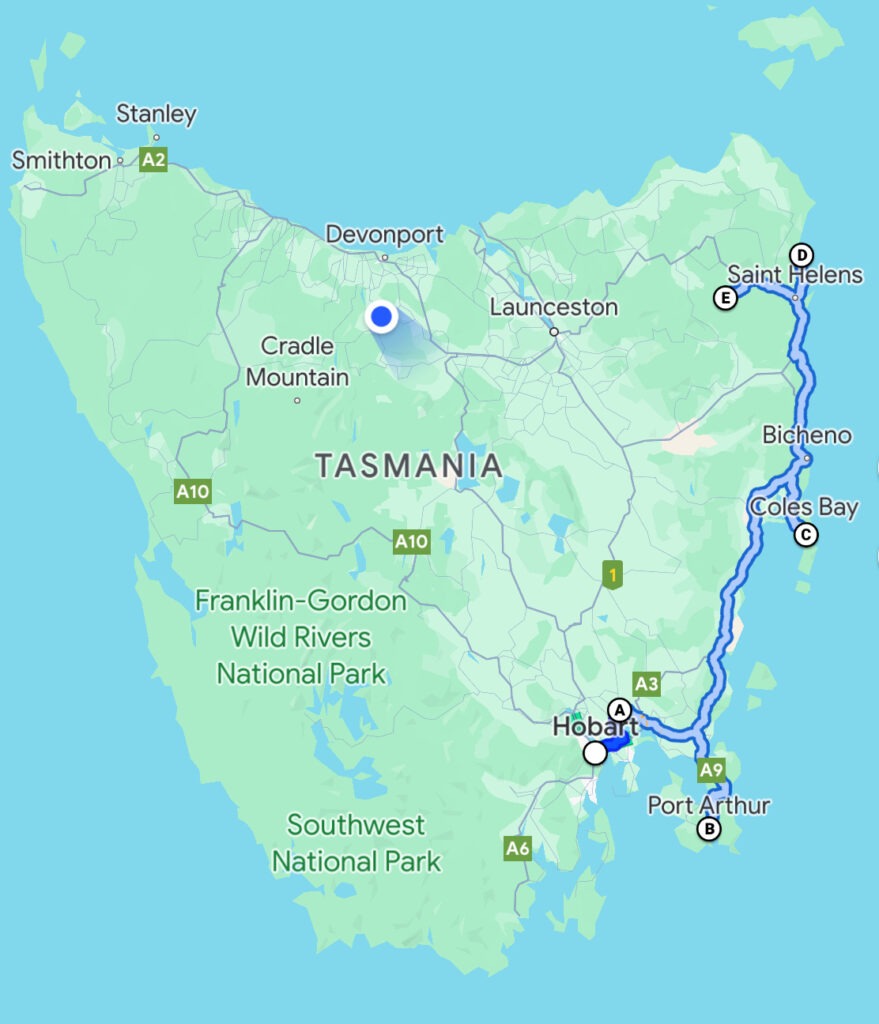
I don’t think we have had two better “weather” days than we enjoyed in and around Hobart, Tasmania’s beautiful capital city. Fortunate, because it is a beautiful city on the Derwent River, and the sunny skies provided for a complimentary backdrop to it all. We were certainly overdue for some consistent sunshine and Hobart did not disappoint us. It was, however, still not as hot as we’d been expecting given we were now right in the middle of summer. That said, one must remember that anything above 25 Celsius ( 77 F ) is considered hot in Tassie !
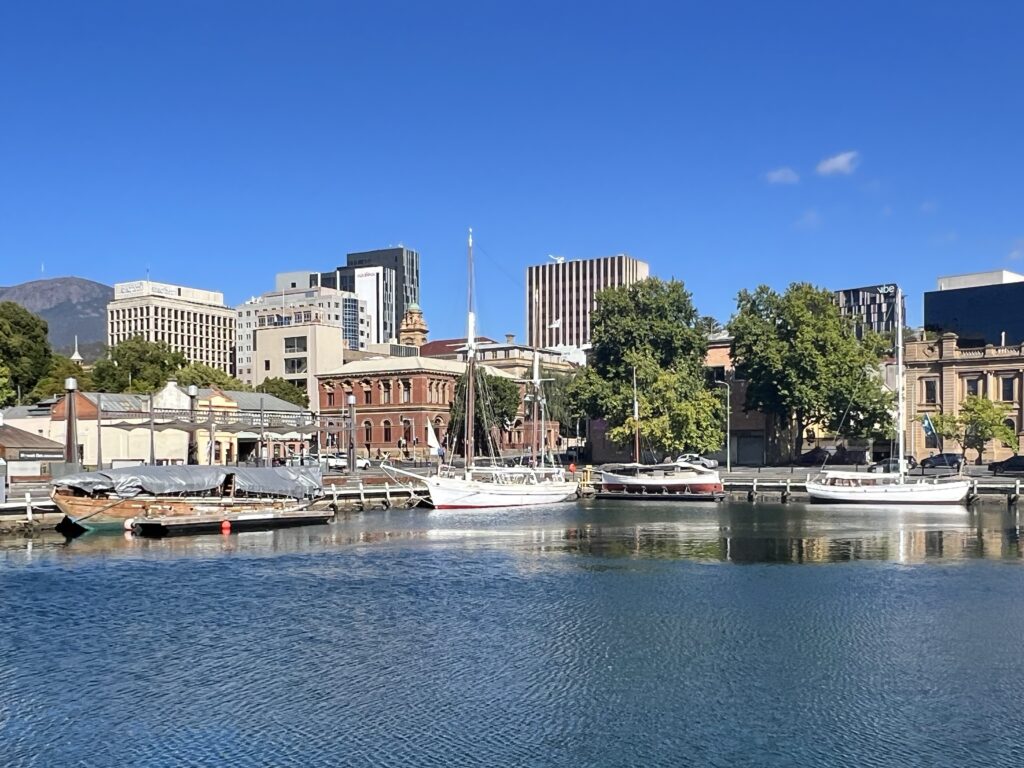
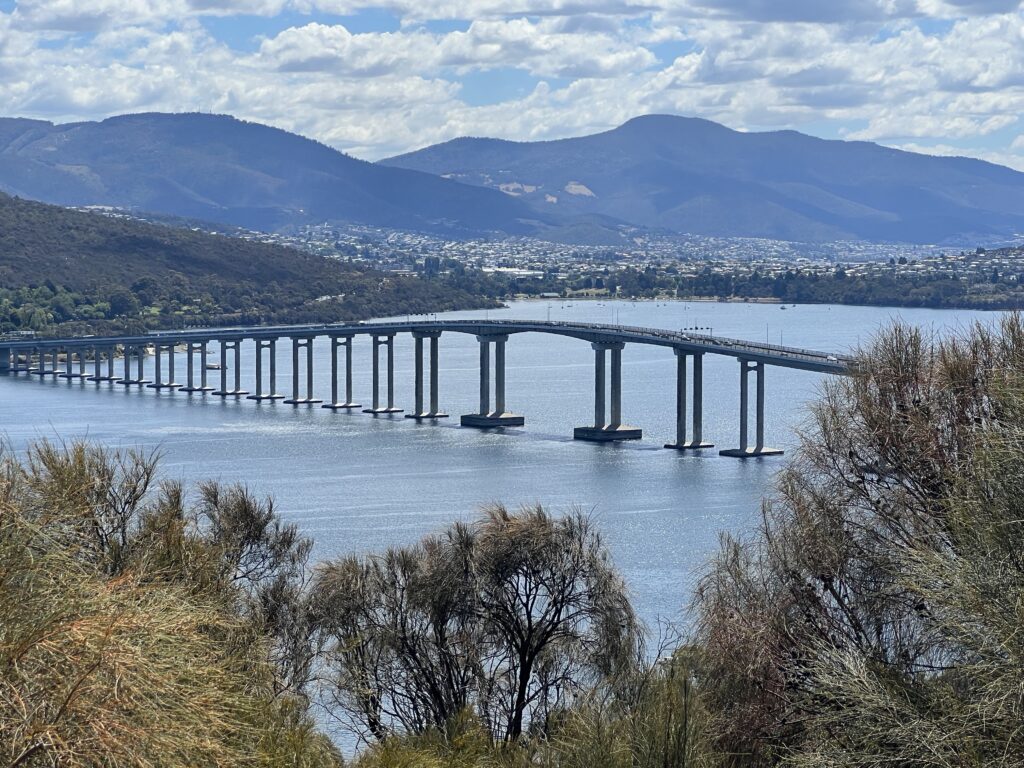
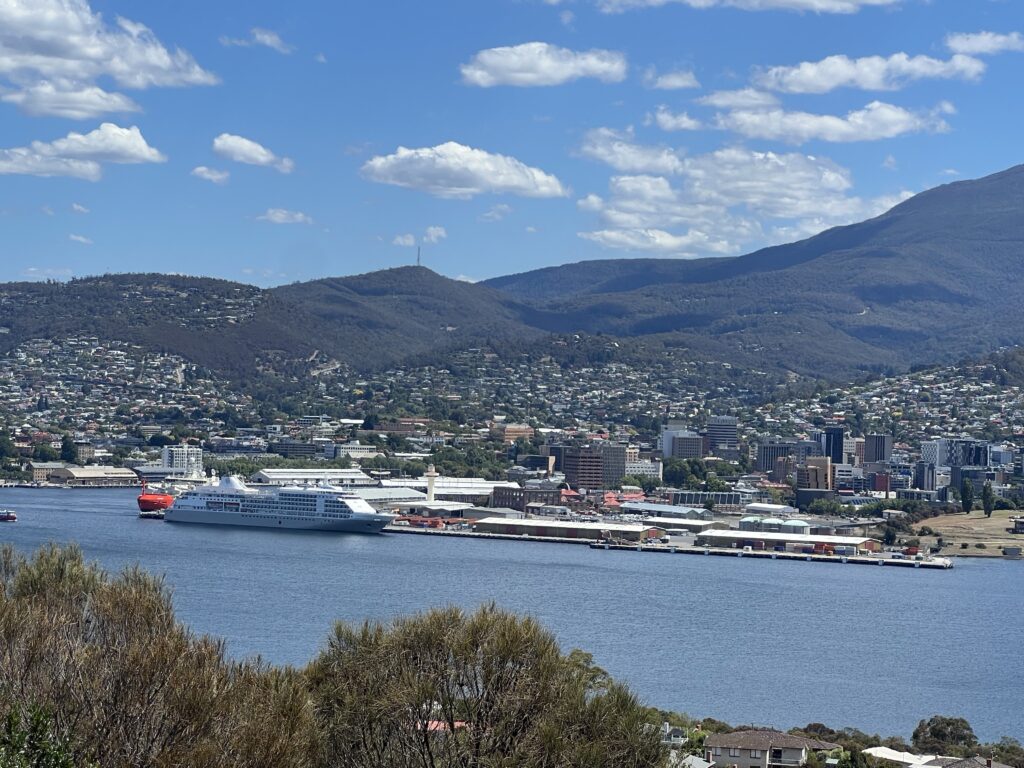
There’s loads of history in the place (it’s older than you think), and has some of the country’s best preserved convict-era buildings. Its downtown is compact, easy to navigate and the waterfront, centred on Constitution Dock, makes for great walking and good old fashioned people-watching. A highlight for us was the drive up to Mt. Wellington ( tight in a long van – but we made it ) where expansive views of the city, the harbour and nearby towns are on offer from a vantage point more than a kilometre above the city itself. Noticeably cooler up there, too. The curious opening times ( closed on two midweek days ? ) of the avant-garde MONA ( museum ) prevented us visiting it during our stay. Not sure it was our cup of tea in any event !
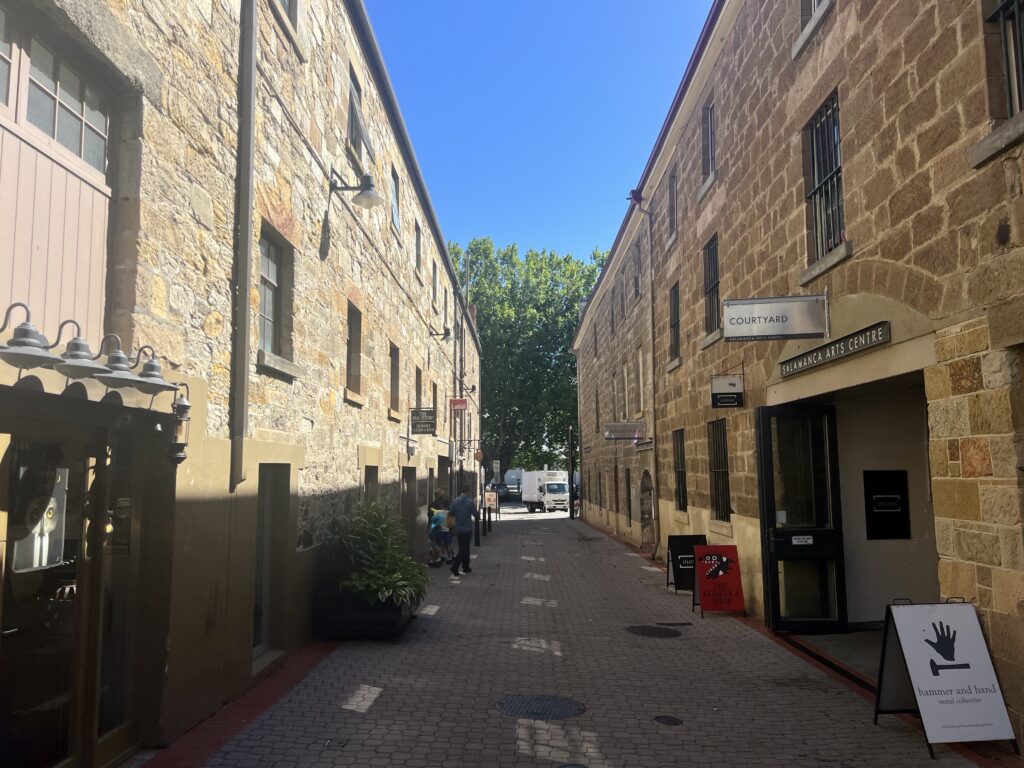
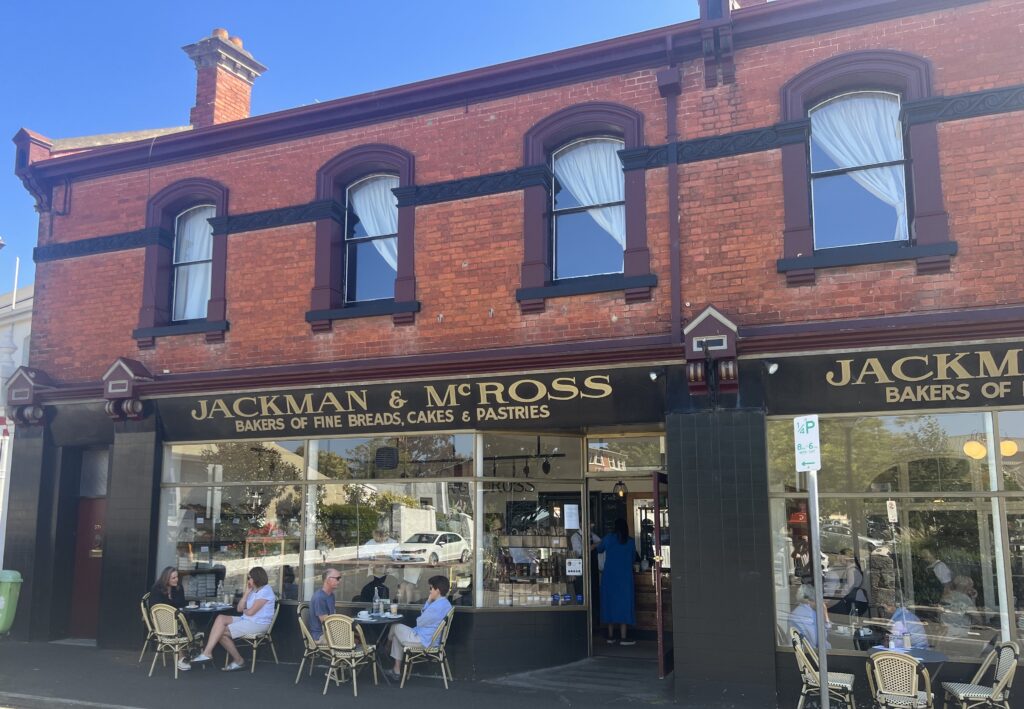
The convict era left Australia with some well preserved and infamous gaols ( jails ) and Tassie has two that standout, both close to Hobart. Port Arthur ( which we’d both explored on previous trips ) is certainly much larger, but we found the Richmond jail ( a new attraction for us ) to also be most worthy of a visit. Fascinating history, and, while smaller, better preserved than its more famous (infamous ? ) peer further east. Richmond probably has the best collection of period buildings in any small town in Tasmania, annd also claims Australia’s oldest ( and one of its most photographed ) functioning bridges. Among a host of other attractions as well, this quaint little town also offered up a great farm camp !
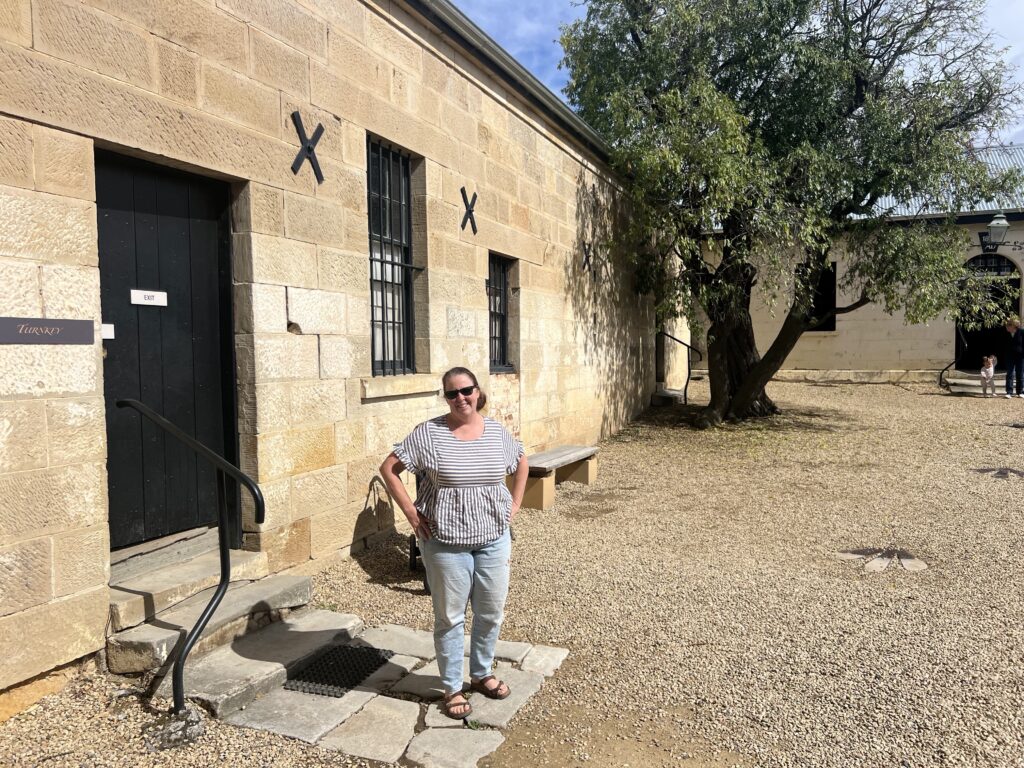
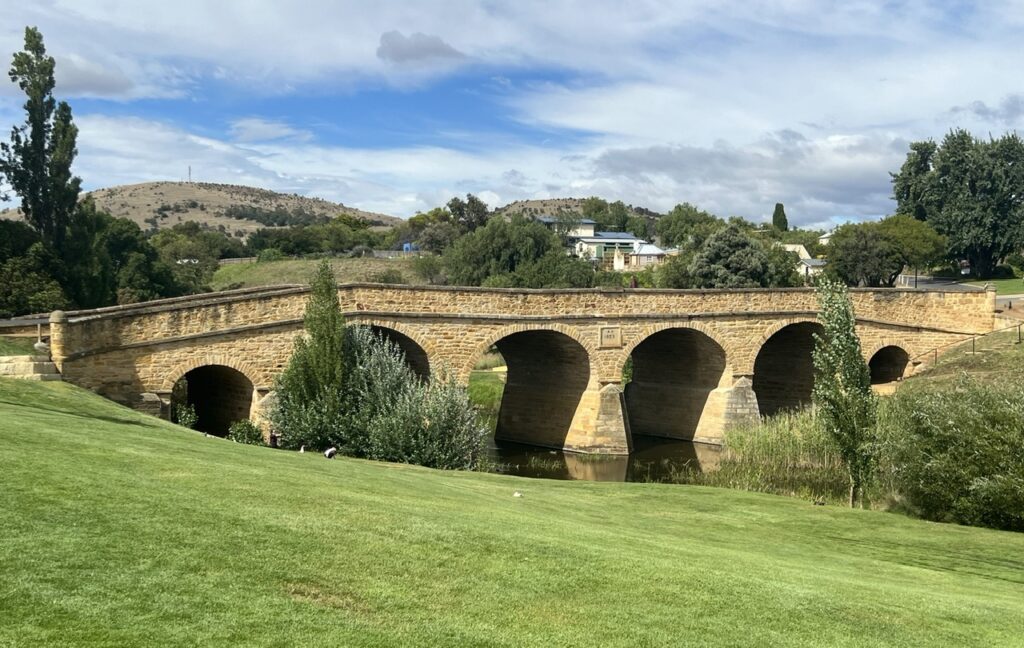
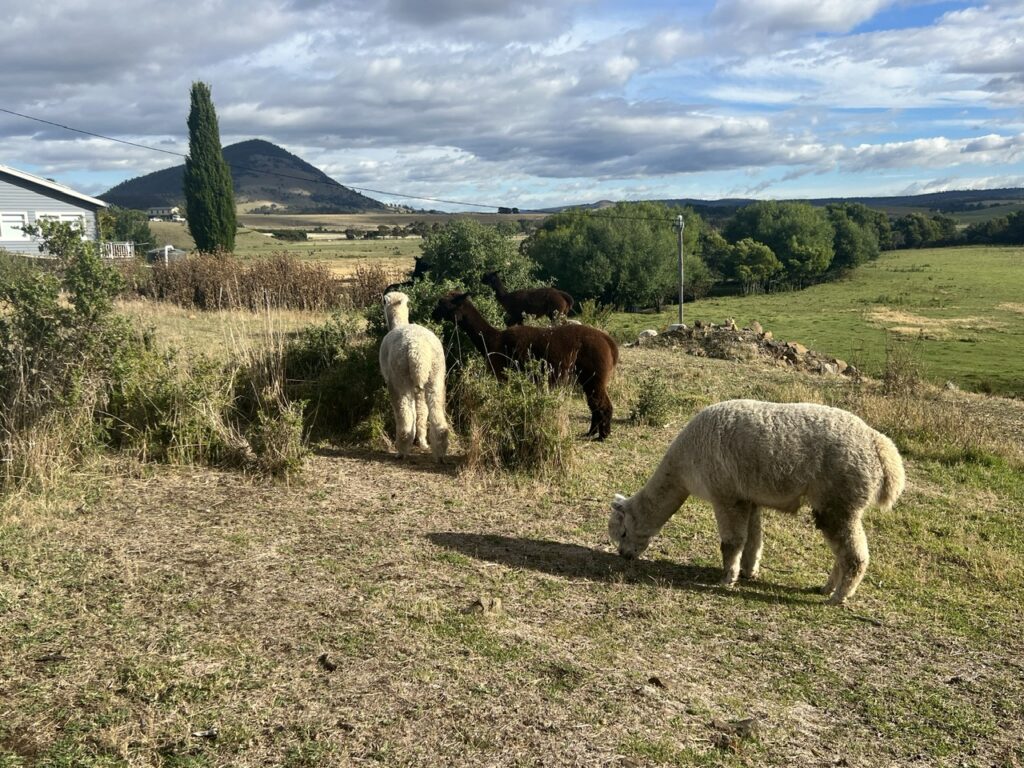
From Richmond our route took us out near Port Arthur ( known for its coastal drive as well as the prison) then heading north up Tassie’s east coast. More populated, more accessible and generally attracting more visitors than the west, the lack of traffic there both surprised and pleased us since many other travellers had warned us in advance that it would be busy.
A few days easy cruising up the east side took us through many of the well known towns and some spectularly scenic coastline. Wineries, breweries, fishing villages & some of the whitest beaches in Tassie await those who explore this corner of the island – but the jewel in the crown of the east coast is undoubtedly Wineglass Bay (on the Freycinet Peninsula ). It’s the stuff postcards are made of, visitors being rewarded with a spectacular view of its crescent-shaped white sandy beach after a hike that is short but certainly gets the muscles working. In a week that gave us mixed weather, Wineglass Bay served up a gem of a day while we were there.
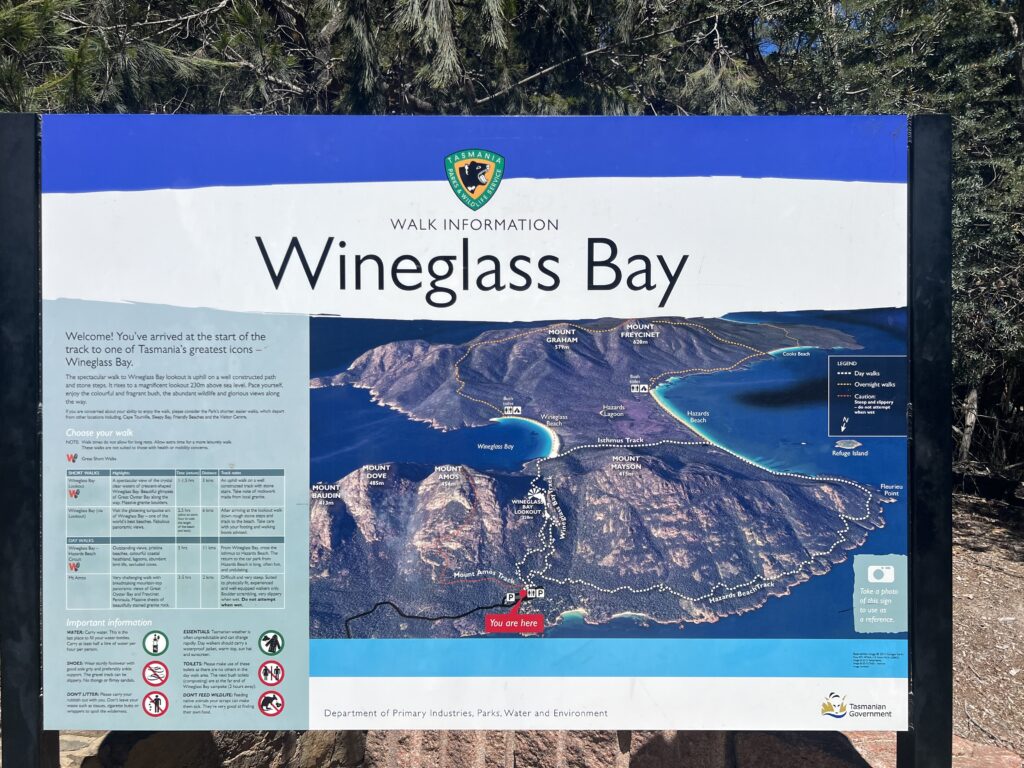
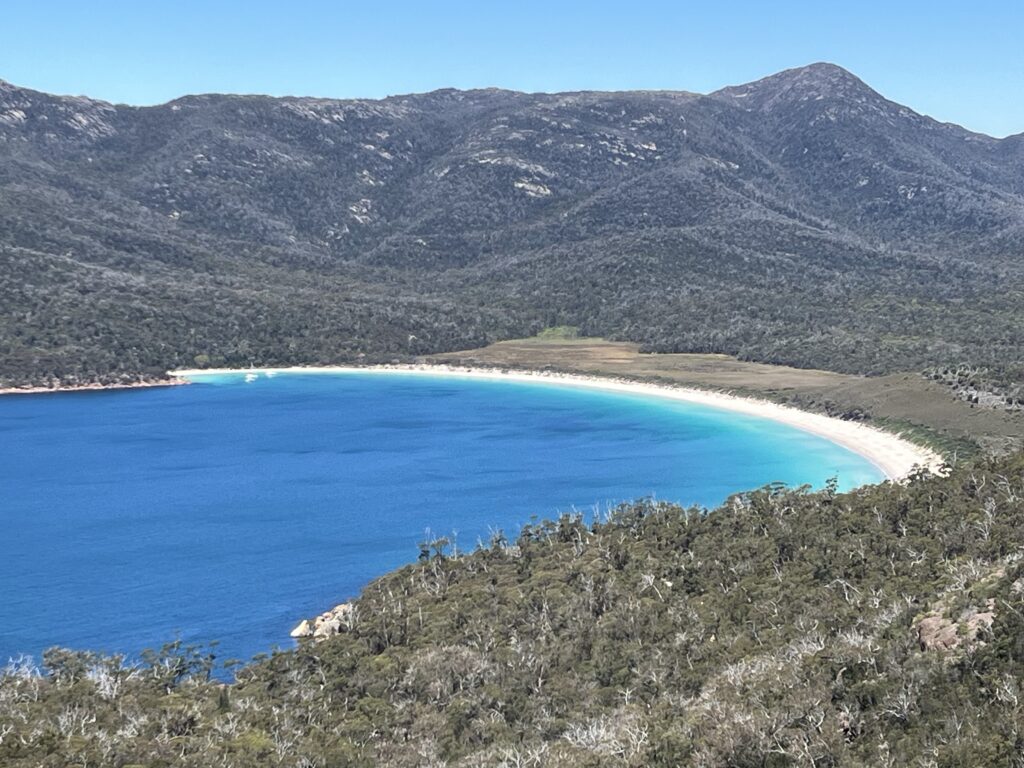
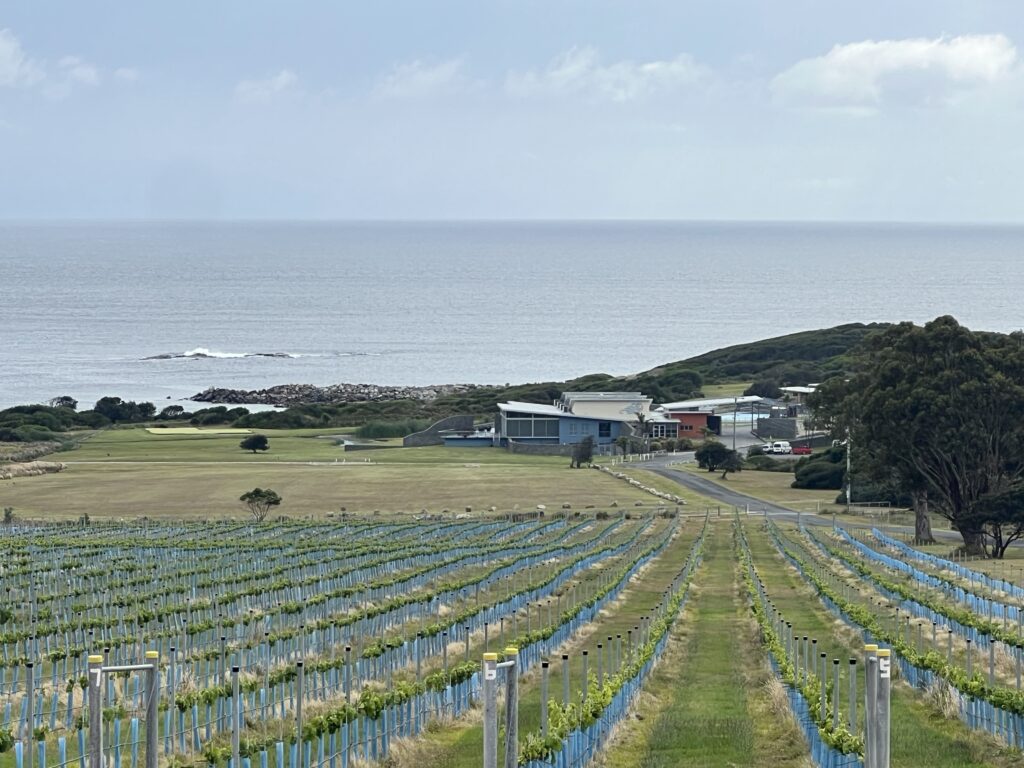
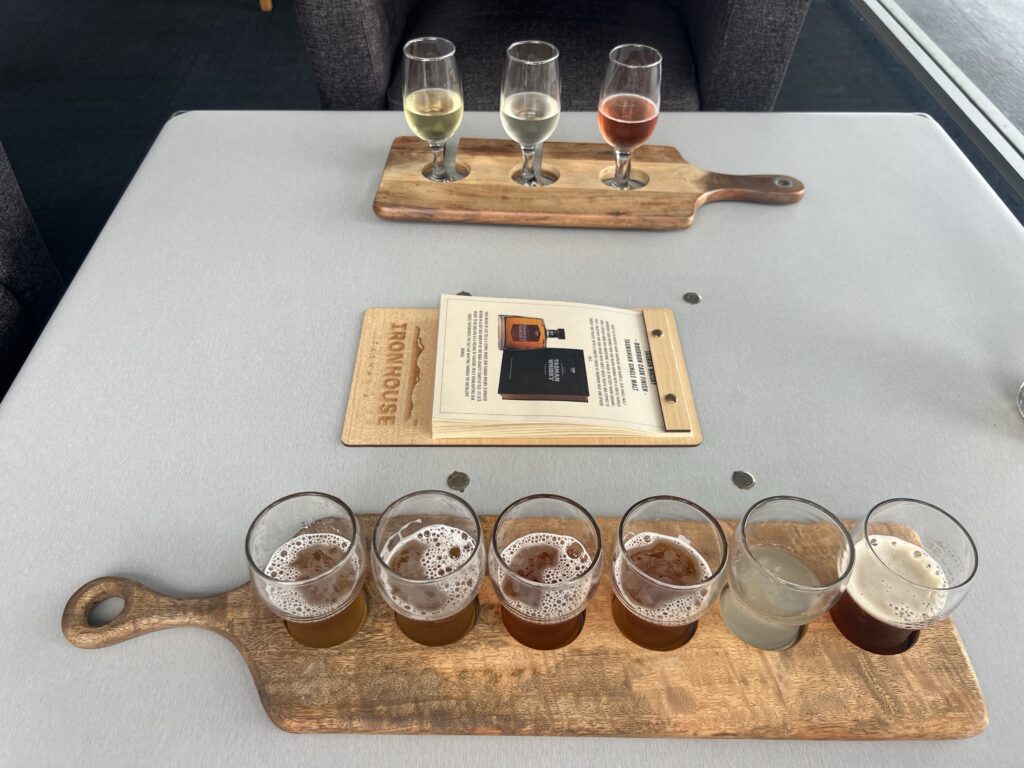
Upon reaching St Helen’s the main east coast road more or less comes to an end and the highway turns west for the mountainous climb up to Scottsdale. Taking the small road which continues just a little further north past pretty Binalong Point takes one to another of the east coast’s highlights, the Bay of Fires and an area known as The Gardens. Certainly the coast’s nicest beaches and some really unusual rock formations, but given the water temperature we had to content ourselves with “looking” rather than swimming. Perhaps with a wetsuit !
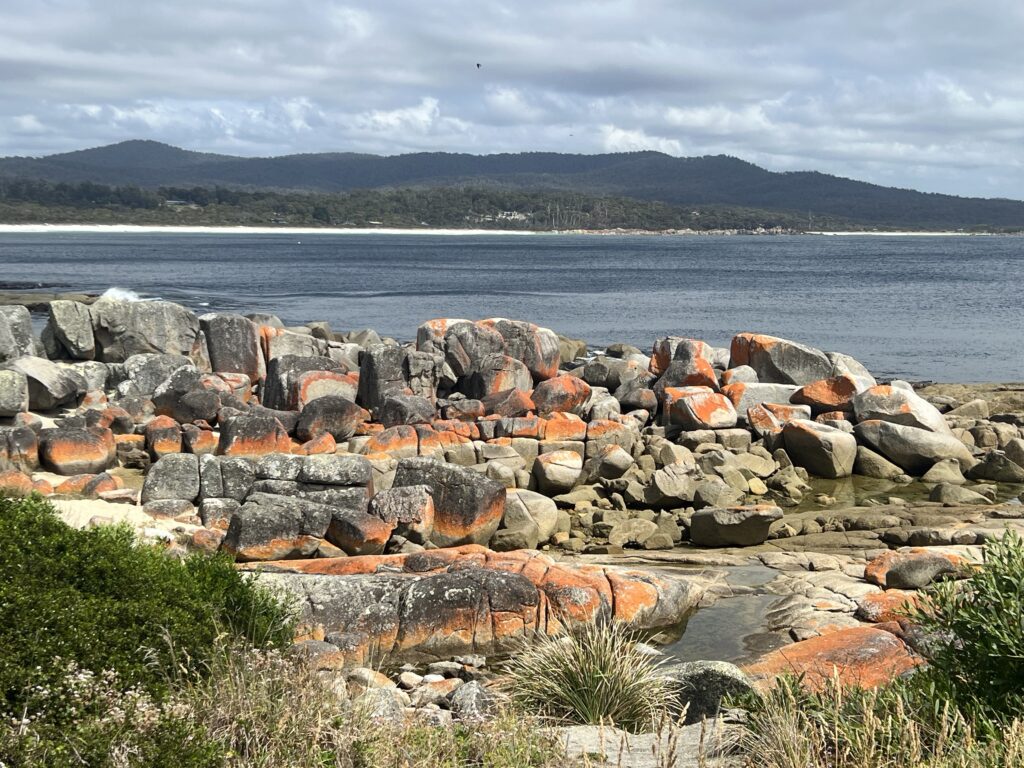


Leaving the coastline and climbing up into the mountains, a rather circuitous road took us to the small community of Pyengana known for both the historic “Pub in the Paddock” and impressive St Columba Falls. Both well worth a visit !
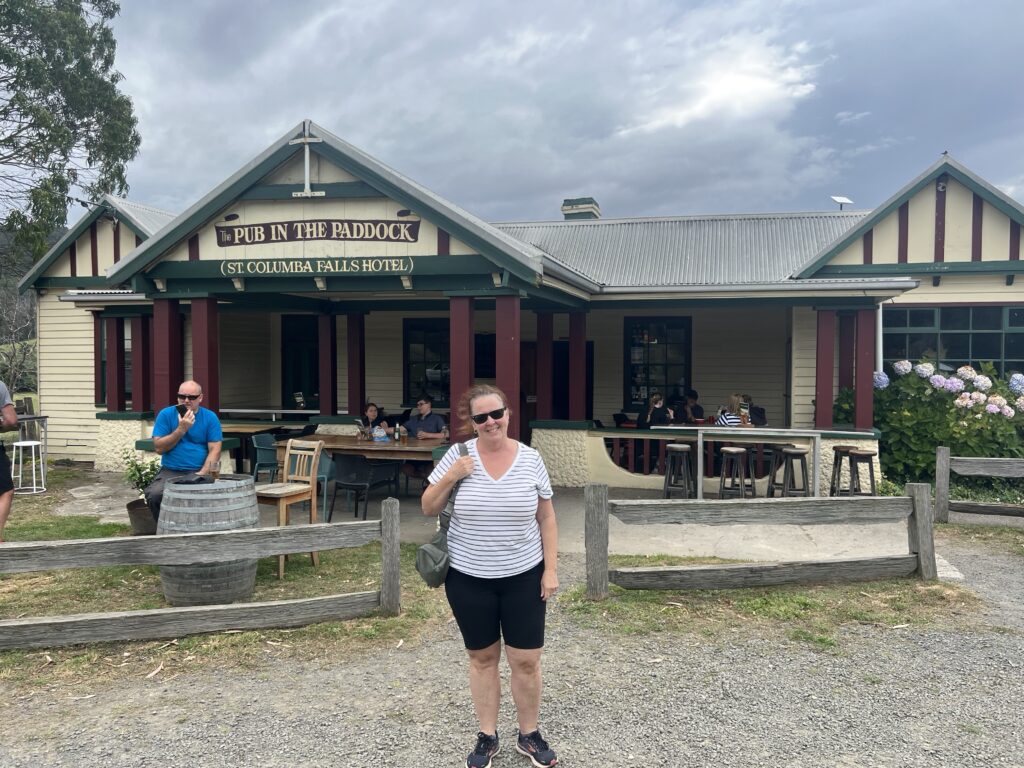
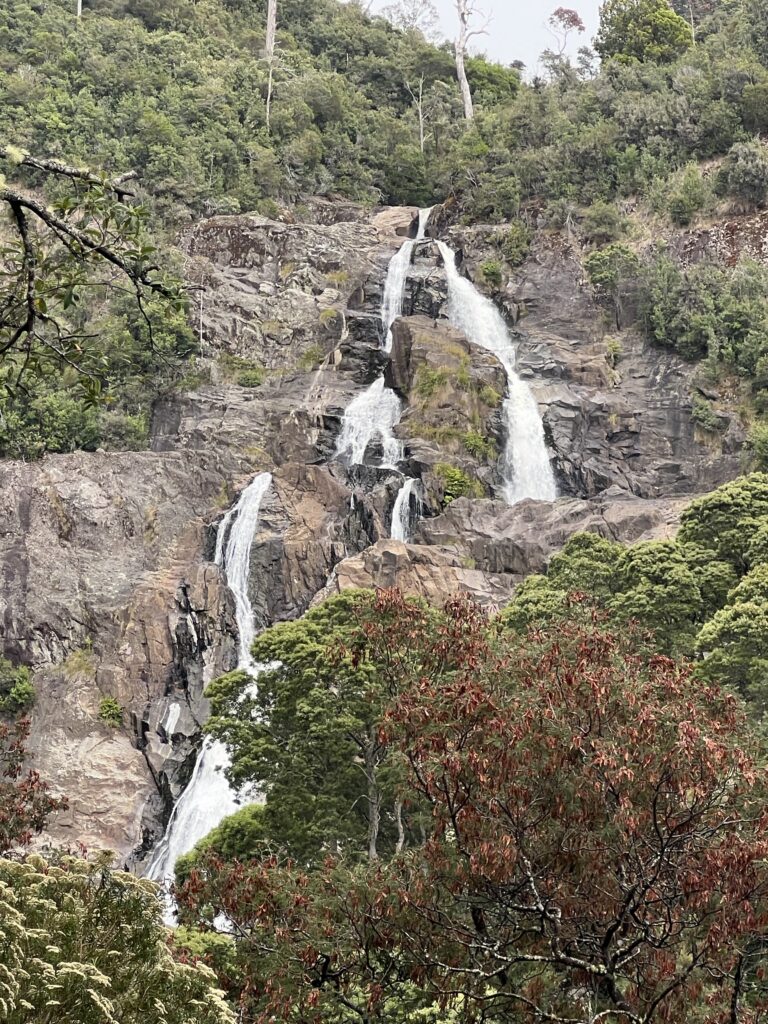
From here continue heading west and explore Tasmania’s central north, the final leg of our travels in amazing Tasmania.
Till next week…….

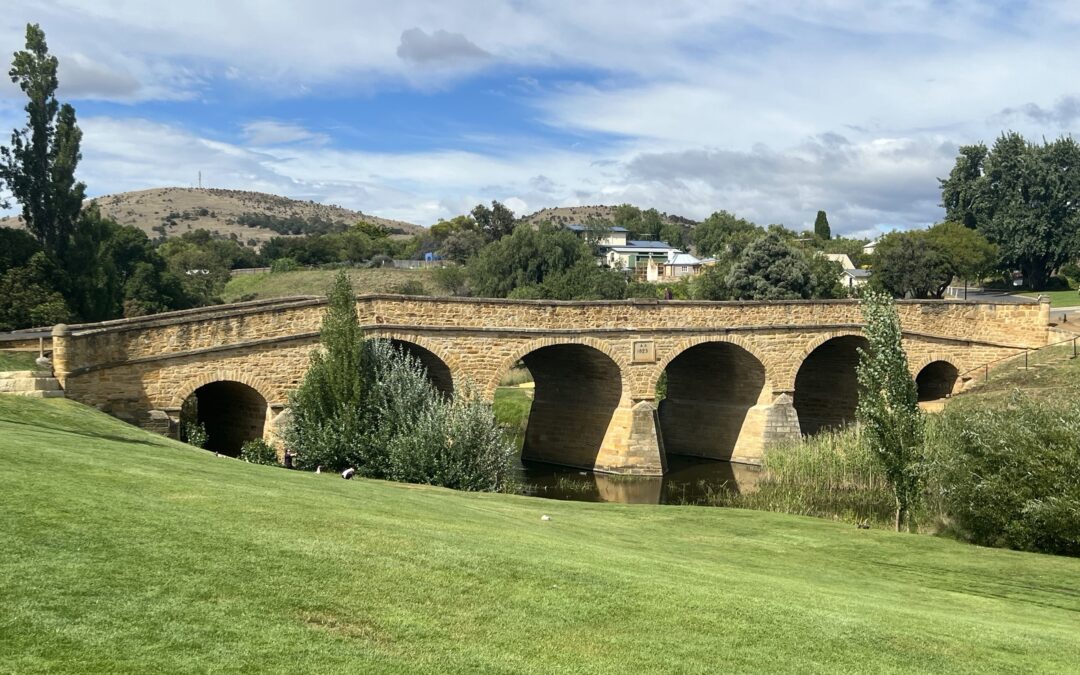

Love the drone footage! Interesting red coloration on the rocks at bay of fires. I wonder if related to the name. Reminds me of iron oxide
Not sure if the red is a kind of lichen or something else but not related to area name.
It was given by the early explorer, who, when sailing past this area, saw many fires along the beach lit by the local aboriginals. Interesting history !
What a trip. You’re not missing out on any of the great spots. Love seeing what you’re up to and really hope we get to see you while you’re in Aus. I want to tell Lois we can finally ski moguls when they’ve got fresh snow, and the less black, black runs! It’s only taken 12 years😂. In Colorado and Utah enjoying lovely snow xx
Wonderful to hear from you guys and glad you are enjoying some skiing in the US ! Send us some pics of your new style (lol )! When are you back in Oz ?
Hi Jeff and Lois,
Always fun to read about your adventures down under.
I got a kick out of the Ozzie habit of shortening Tasmania to Tassie.
Abel Janszoon Tasman , the Dutch explorer’s last name in English is Bagman.
Tas is bag. If you speak Dutch slang tas becomes Tassie.
What are your plans for post Australia?
Josine and I are in Nicaragua and did part of the Pan American highway but a mere fraction of what you covered on your Americas journey
Hello Hans !
So very nice to hear from you, and really thrilled to hear that you are out on the road yourselves. Nicaragua is a pretty cool place, eh ?
Interesting tidbit about the Dutch language…..I did not know that !
Right now we are focused on securing a shipping route out of Australia ( not easy with issues in the Red Sea and droughts affecting the Panama Canal !). We will travel onwards but not directly to Canada for a while yet if all goes well !